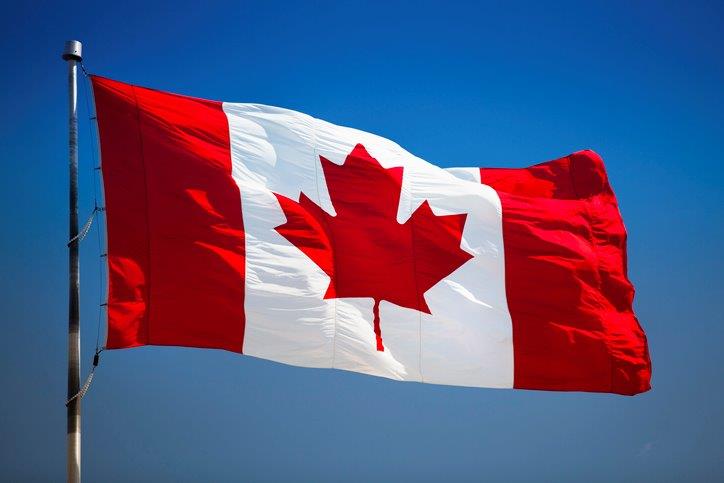Bank of Canada signals rates might have peaked. What comes next?
The Bank of Canada held its benchmark interest rate steady at 5.0 per cent on Wednesday and hinted that its tightening cycle might have peaked, but policymakers stayed mum on a possible timeline for rate cuts.
The decision, which marks the fourth consecutive hold from the central bank, was widely expected by economists.
Bank of Canada governor Tiff Macklem told reporters Wednesday that conversations at the central bank have shifted from debating whether interest rates are high enough to how long the central bank needs to keep rates at current levels.
The Bank of Canada has been raising the cost of borrowing since March 2022 in an effort to tamp down inflation, which has declined sharply from highs of 8.1 per cent. Annual inflation ticked up to 3.4 per cent in December from 3.1 per cent the month previous.
Macklem said that rate hikes to date have worked to relieve spending demand, but cautioned that rates could still rise further if inflation does not cooperate.
“Inflation is still too high, and underlying inflationary pressures persist,” he said. “We need to give these higher rates time to do their work.”

Spring rate cut is in the cards, economists say
Nathan Janzen, assistant chief economist at RBC, tells Global News that the shift in tone from Macklem on Wednesday reflects a growing “conviction” that the next move from the central bank is likely a rate cut, not another hike.
After Wednesday’s rate hold and presser with Bank of Canada officials, most economists doubled down on their predictions for interest rate cuts to begin in April or June.
Desjardins and TD Bank are among forecasters calling for easing to begin in the spring, while RBC, CIBC and BMO are eyeing closer to mid-year for cuts. Money markets continue to fully price in a first, 25-basis-point cut in June, according to Reuters.
CIBC chief economist Avery Shenfeld said in a note to clients Wednesday that if inflation comes in below expectations, cuts starting in April are not off the table. CIBC is calling for a total of 150 basis points of rate easing this year, with the possibility the second cut from the Bank of Canada is half a percentage point.
Revised forecasts in the Bank of Canada’s Monetary Policy Report (MPR) released Wednesday reaffirm the central bank’s expectations that inflation will hit its two per cent target in 2025. But Macklem warned that future declines in inflation will be “gradual and uneven,” suggesting that the path back to the two per cent target will be “slow.
Another interest rate hike is not in the Bank of Canada’s “base case,” Macklem said, but he said starting conversations about when the central bank can cut rates is still “premature” given ongoing risks to inflation such as high household debt levels and trade disruptions through the Red Sea.
“The progress has given us confidence that the rate is high enough; the unevenness, the persistence we’re seeing has us convinced that for now we need to hold where we are,” he said.
Macklem was asked Wednesday why he was not giving Canadians a clearer timeline for interest rate cuts.
“I worry that putting it on a calendar, it’s a false sense of precision. We’re going to have to see how inflation evolves,” Macklem said.
Shelter inflation a sticking point for Bank of Canada
Among the biggest standouts in inflation flagged by the Bank of Canada is shelter price inflation, which continues to run close to seven per cent annually. The central bank highlighted rising rents and costs for households renewing their mortgages as keeping pressures elevated here.
Macklem was asked why the Bank of Canada is not dropping interest rates now if one of the sources of inflation is so closely tied to its own policy rate. He replied that while housing is an “important part of the economy,” it’s not the only source of inflationary pressure, with other parts of the consumer basket like food inflation also holding above the target.
Signs of underlying inflation elsewhere therefore reinforced the need to keep the policy rate at 5.0 per cent to keep downward pressure on prices, he said.
Bank of Canada senior deputy governor Carolyn Rogers was asked what impact, if any, the federal government’s planned cap on international students announced earlier this week would have on shelter inflation.
While Rogers said the central bank doesn’t comment on immigration policy, she said that Ottawa’s plans were “on their way to relieving” some of the pressure on the housing market from population growth.
While the student cap could deliver some localized relief on rent prices in some cities and neighbourhoods close to schools, Janzen says it’s unlikely to offset the structural housing gap and growing population in Canada.
“As far as moving the needle nationally, I think that the view is it’s most likely not significantly enough to impact the inflation numbers,” he says.
Rogers was also asked whether the Bank of Canada is concerned that announcing a likely peak in its rate tightening cycle will spur a rebound in the housing market that ultimately fuels inflation. The central bank announced a “conditional pause” in its rate hike campaign a year ago, which economists say helped to fuel a surge in the 2023 spring housing market.
Cited from: Global News








